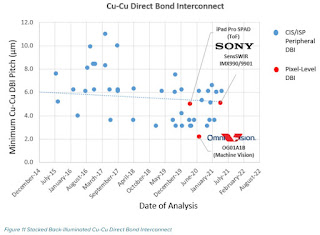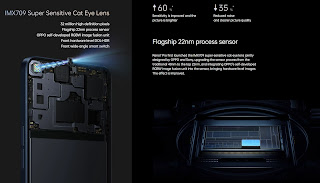iNews, Lieyunwang, iFeng: Guangzhou Tyrafos (Chinese name Guangzhou Yinxin Semiconductor Technology Co., Ltd.) announces the A+ round of financing led by Yunqi Capital. By the end of this round of financing, Yinxin Semiconductor is expected to receive hundreds of millions of yuan in the near future.
Tyrafos also announces announced the release of "the world's first non-single photon dToF" (possibly, they mean dToF that is not based on SPADs) and ELISA molecular biological detection solution basedon image sensors.
"The world's first non-single-photon dToF released by Yinxin Semiconductor is the world's first technical solution to achieve direct ToF using CMOS process. Not only the accuracy and resolution are several times higher than the existing SPAD (Single Photon Avalanche Diode) solution. In addition, the overall power consumption of the laser light source at the transmitting end and the sensor at the receiving end has been reduced by 90%, catching up with the core technology of foreign manufacturers such as Apple and STMicroelectronics in this field, and the underlying architecture and circuit IP are independently developed by Yinxin Semiconductor, it solves the technical problem of the neck stuck in the field of 3D perception, and is a milestone breakthrough in the field of 3D perception."
"In the field of fingerprints under the optical screen, Yinxin Semiconductor adopts the innovative design of pixel architecture level to break through the area and cost limits. The chip area is 30%~50% smaller than that of competing products, and the module volume is more than half smaller than that of competing products. It has an ultra-high cost performance. Competitive advantage, in 2019, through cooperation with customers, it became the first optical under-screen fingerprint recognition solution certified by South Korea's Samsung mobile phone. At present, Yinxin Semiconductor has reached an agreement with 4-5 global leading fingerprint solution providers to purchase under-screen fingerprint chips. Intentional orders are expected to contribute hundreds of millions of yuan in revenue."
"The world's first digital ELISA molecular biological detection solution released by Yinxin Semiconductor is the world's first digital solution that directly performs molecular biological detection on the surface of an image sensor. Enzyme Linked Immunosorbent Assay (Enzyme Linked Immunosorbent Assay, abbreviated ELISA or ELASA) refers to a qualitative and quantitative detection method that combines soluble antigens or antibodies on solid-phase carriers such as polystyrene, and uses antigen-antibody specific binding for immunoreaction. . Taking advantage of the company's advantages in high-speed and high-sensitivity image sensors, Yinxin Semiconductor has created a complete set of micro-molecular biological detection equipment based on ELISA standards, achieving a zero breakthrough in this field, and surpassing the United States in detection accuracy and speed. NASDAQ listed company Quanterix (the core technology comes from the Harvard University technical team, the technology founder David Walt is an academician of the American Academy of Engineering and the Medical School, and is also the scientific founder of Illumina) SiMoA (Single-molecule Array) system, and Yinxin Semiconductor In terms of equipment cost and consumables cost, the digital ELISA technology of the company has a significant improvement over Quanterix's SiMoA system technology. The sensitivity of the digital ELISA technology is more than 1000 times higher than that of the traditional ELISA. Its appearance brings protein detection technology directly into the era of single-molecule and digital detection, becoming the true king in the field of fg-level ultra-low abundance protein detection. The optimization of detection accuracy, speed and cost is more conducive to application promotion. In the future, it will have great application potential in the fields of coronavirus detection, influenza virus detection, and early cancer screening."
Tyrafos has been established in May 2019 and its core team coming from TI, Omnivision, Samsung, Himax, TSMC, Mediatek, ASE, Foxconn, and Chi Mei. The company has >90 full-time R&D and operations employees. The core members of the team have 15-20 years experience in the semiconductor industry. The company names Sony and Samsung as its strategic partners, and TSMC, Samsung, and Tower as its foundries.


















































